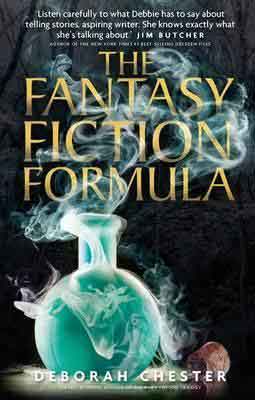
Stuck Writing Your Story? Try Reading a Craft Book!
Even when we outline our stories, occasionally something still goes wrong during the actual process of writing.
Somewhere in the second half of my current work-in-progress, These Fleeting Flames, I realized something wasn’t quite right. There was interpersonal drama, epic battles, political manoeuvring, dragons (I mean, you can’t go wrong with dragons)… but something was just missing. I decided I wouldn’t start writing the third act until I figured out what, precisely, was wrong with the second half of Act II.
In search of guidance, I cracked open a writing craft book I’ve been meaning to read for a long time: Deborah Chester’s The Fantasy Fiction Formula. And I credit her chapter on the “SPOOC” for helping me figure out where my story went astray.

The SPOOC
Chester suggests using the SPOOC as a way of testing your story premise before writing a single word. SPOOC stands for “situation, protagonist, objective, opponent, climax.” Your SPOOC should be written in two parts: in the first sentence, you establish the situation, protagonist, and objective; in the second sentence, you formulate a question involving the opponent and the story’s climax.
Sounds easy, right? That’s what I thought at first. So I plugged in my plot elements and tried to write my own SPOOC.
The first sentence
Here’s what I came up with for the first half of the equation:
After a ruthless plains lord murders her family, Tatiana vows to avenge them.
Alright, no problem, that was easy! I have my situation (a bad man murders Tatiana’s family when they don’t use their magic to hatch him a dragon egg), my protagonist (Tatiana Keeper, a seventeen-year-old girl with Keeper magic), and her objective (to avenge the deaths of her family).
My problem
I expected the second sentence to be just as straightforward. I was wrong. After struggling to boil down my novel’s antagonist and climax into a single clear and concise question, I acknowledged I had a problem.
Based on my premise, the plains lord is clearly the antagonist of this story. But at the novel’s midpoint, the motivations of his ruthless actions become clear — he needs a dragon to defend his lands from an outside invading force. And these invaders threaten not only him, but the entire plains and even Tatiana’s home. So, who is the antagonist? This lord, or the invaders that threaten them all? ![]()
Referring back to Chester’s book, I read the following passage:
The opponent needs to be the central, primary antagonist—the character most intent on wreaking havoc on the protagonist’s life and happiness. You need to understand your antagonist’s motivations and you need to be sure that these two characters really are in direct opposition to each other.
The last part was key to me: you need to be sure that these two characters really are in direct opposition to each other.
This explained why the second half of my story wasn’t quite working, why Tatiana felt more passive than in the first half, and why she didn’t seem to be making tangible progress toward her goal — even though the second half of Act II is all about the protagonist finally making headway against the antagonist based on what she’s learned at the midpoint.
How did this help me get past my writing block?
It was now clear to me that Lord Nicandro was the true antagonist, and he needed to continue to be in direct opposition to Tatiana throughout the second half of the novel.
In the first draft, which wasn’t working, Lord Nicandro was just trying to protect his home and wasn’t directly out to get Tatiana. I went back to my outline, rejiggered Lord Nicandro’s character, and gave him and Tatiana more reasons to meet and oppose each other throughout Act II. In the revision, he’s got a few tricks up his sleeve and he has more twisty motivations, which pits him time and time again against Tatiana.
Now that my antagonist is stronger, my protagonist has someone to butt heads with on the page — instead of just hitching along for the ride until this unknown invading force finally makes an appearance just before the third act. This gives Tatiana a chance to drive the plot forward toward her true goal as she tries to outmanoeuvre Lord Nicandro so that she might finally deliver him justice.
Putting it together
At last, I was able to write the second sentence of my SPOOC. Here’s what I came up with when I put it all together:
After a ruthless plains lord murders her family, Tatiana vows to avenge them. But when the lord and his powerful dragon are the plains’ only hope of stopping an invasion, can Tatiana get revenge without costing them the war — and turning the entire plains against her?
Takeaway
Next time you find yourself stuck outlining, writing, or revising a novel, I highly recommend taking a step back and reading a book on writing craft.
Reading about writing can open up your mind to thinking about problems from totally different angles — it’s my go-to strategy for when I need to brainstorm solutions to tough writing problems.
Photo by Dustin Tray from Pexels
